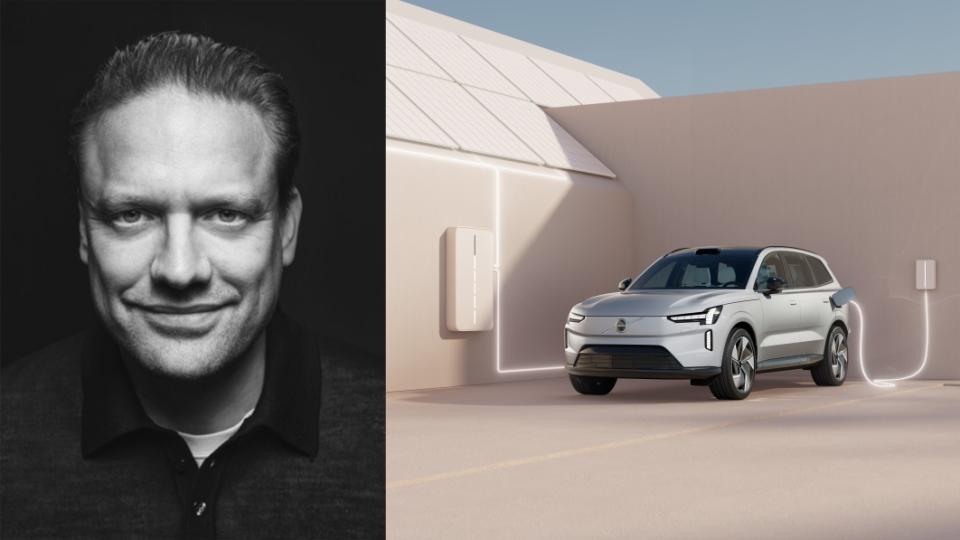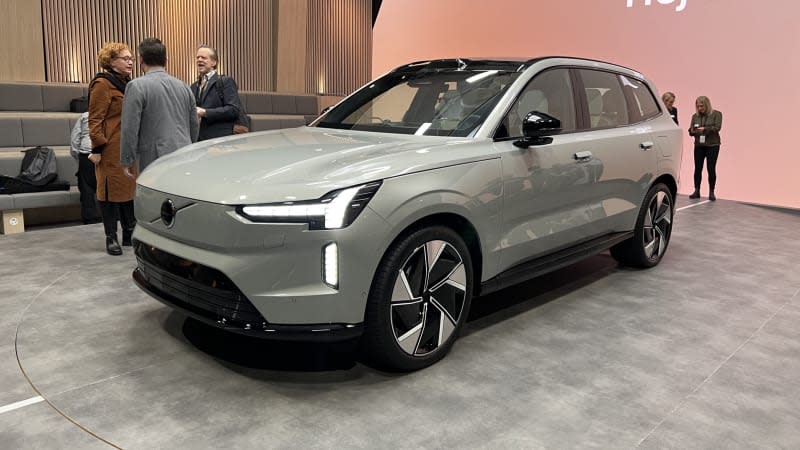How Volvo is going greener, according to sustainability chief Henrik Green

STOCKHOLM — This week, Volvo unveiled its new flagship electric vehicle, the EX90 three-row SUV. It’s not just a look at a product we’ll see come to market in 2024, but a glimpse at the approach Volvo is taking to become more sustainable as it aims to go all-electric by 2030 and carbon-neutral by 2040. After the unveiling of the EX90, we had the opportunity to speak with Henrik Green, Volvo’s advanced technology and sustainability officer, as part of a roundtable discussion about the brand’s climate strategy moving forward.
Part of the strategy is accountability and transparency. In an industry where sensitive materials like cobalt and lithium can be environmentally, socially and geopolitically problematic, traceability is paramount. Volvo will use blockchain technology — the same sort of secure ledger tech that makes cryptocurrency possible — to trace cobalt, lithium and nickel from their very origins in the earth all the way to the EX90s that roll off the factory floor. Green said he expects that traceability to expand to more materials, but those three are what Volvo can commit to today. Green also predicts a time when “you as a consumer should be able to see, ‘Here, in my app, this is the car I bought, this is where my nickel came from that’s in my car.’”
While step one is improving transparency, “the next step is — this is much more long-term — how can we affect the industry to source from the most sustainable sources as possible?” And that leads us to recycling. A circular economy is the goal, where raw materials are used minimally, replaced by materials sourced from old cars, batteries, electronics and the like. But that depends on the first generations of electric cars fulfilling their lifecycles before they can be recycled. And obviously the better the longevity of products like batteries, the longer this will take. “Unfortunately, it has this built-in time lag of putting batteries out there that live until they need to be replaced, and then we will get the material back.”
Partners are beginning to scout for those recyclable materials from sources like non-automotive electronics, “but the massive volume of car batteries will not be accessible until these cars have been on the road 10, 15 or more years.” But recyclability is one of the main factors Volvo looks for when partnering with companies like Northvolt, with whom Volvo is building a factory and R&D center in Gothenburg, Sweden.
Recycling is not just about batteries, though. The EX90 is Volvo’s most recycled car to date. 15% of the plastics are recycled, as is 15% of the steel and 25% of the aluminum. Volvo aims to expand that to 25% of plastics, 25% of steel and 40% of aluminum in its cars by 2025, and significantly more than that by its 2040 climate-neutrality target date. And Volvo is working toward making its cars not just more recycled, but more recyclable, so it can use more of its own materials in that circular production process. “The difficult part of that is to take it apart, and sort it into monomaterial bins” for recycling, Green said. “I foresee in the long term, here, we will engineer cars where it’s easier to disassemble and sort them in pure material boxes. That way we can really get the circular economy and circular business going.”

 Yahoo Autos
Yahoo Autos 

